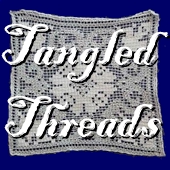
 



|
Patterns
So you know how to make period mesh, you know how to darn
it in period style. What comes next? A decorative
pattern, of course! If you can count, you can read a
lacis pattern. The system for reading a lacis pattern is
essentially the same for reading a cross-stitch pattern:
find a starting point, and count grids from that point to
know where and how many stitches to do.
What stitches do you use? Well, most period patterns look
like this: 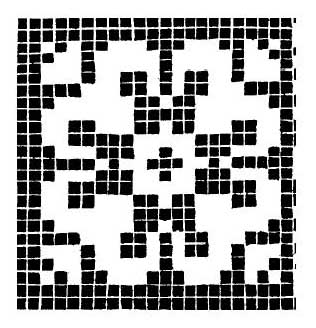
They
don't really give you too much imput as to what stitches
go where. You get to make the decisions, and satisfy your
own taste in the matter. You could do it all in darning
or cloth stitch, and it would look like this:
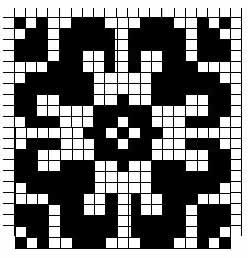
Or you
could do some cloth and some interlock stitches, like
this:
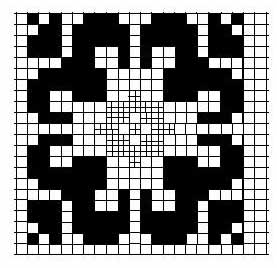
or:
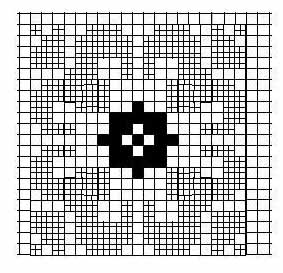
Now it
becomes a matter of tastes and time, rather than a
lockstep obedience to a pattern.
Where do you find patterns? Probably the first place to
look is period pattern books. Vinciolo wrote, "Les
Singulairs et Nouveaux Portraicts" in 1587; this
seems to be the starting point for most people in search
of period patterns. It is still in print, under the name,
"Renaissance Patterns for Lace and Embroidery."
There are other period lace designers still in print,
such as Pierre et Sainct Louie and Claude Nourry.
Finding other sources for patterns is easier than you
might imagine. This is the point at which graph paper
will become your friend; it is absolutely essential to
pattern making. The graph paper lets you draw a
translation of a pattern, or try out the various
combinations of stitches, before you've made a commitment
on the stretched lace. If you're a skilled draftsman,
then you can draw your own patterns directly to graph
paper.
Anything done in a grid -- or that can be translated onto
a grid -- is fodder for your pattern book. Count cross
stitch patterns and needlepoint patterns are obvious
sources. What about counted threadwork patterns? They can
be translated with a little care. This pattern from a
period embroidery book...
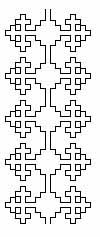
...can be
made into this lacis pattern:
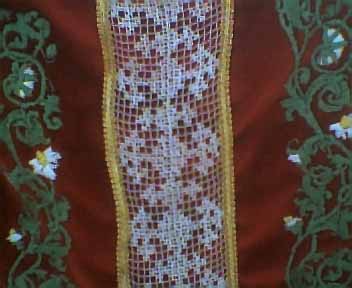
There is
reason to believe that such translation from embroidery
to lace and back again were done in period.
One secret, unperiod trick I've used to create grids of
complex patterns involves a computer. Carry an image onto
the Paint program on your computer. Zoom in, and activate
"Show grid." Voila! Your picture is gridded. A
screen capture will allow you to save and print the grid.
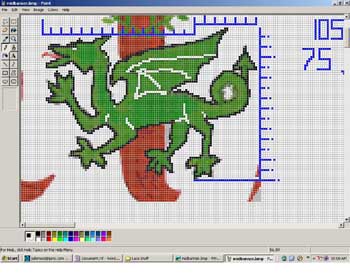
[The
information and images on this website are Copyright of
Lady Cecilia Bartoletti (June). You may make a copy and
use any information contained herein for personal use
only, or for SCA documentation purposes. Unauthorised
publication is not permitted.]

|